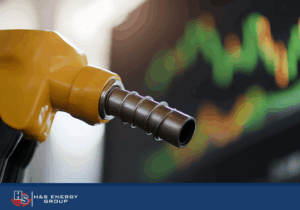Gas prices are easing across much of the U.S., and the West Coast is finally catching a bit of that relief—though the region still sits well above the national average due to taxes, boutique fuel requirements, and refinery dynamics.
-
From the U.S. Energy Information Administration (EIA): For the West Coast (PADD 5) region, the weekly average retail price for gasoline (all grades) was about $4.116 per gallon in the week ending October 20, 2025.
-
From the same source, the West Coast on-highway diesel average was about $4.421 per gallon in the week ending October 20, 2025.
 Nationally, analysts are observing generally softer pump prices this fall, aided by cheaper winter-blend gasoline and lower crude oil costs. Some even suggest that if current trends hold, the national average could briefly dip below $3 per gallon—a backdrop that helps, but doesn’t erase, the West Coast’s consistently higher prices.
Nationally, analysts are observing generally softer pump prices this fall, aided by cheaper winter-blend gasoline and lower crude oil costs. Some even suggest that if current trends hold, the national average could briefly dip below $3 per gallon—a backdrop that helps, but doesn’t erase, the West Coast’s consistently higher prices.
Diesel prices, however, are following a slightly different trajectory. While retail diesel costs are lower than they were during the spikes of 2022, they remain elevated across the West Coast due to limited refining capacity for distillates and strong freight demand. Regional refinery outages or maintenance periods can further tighten supply, creating noticeable price fluctuations in local markets.
Another factor influencing October 2025 fuel price trends is logistics and supply chain adaptation. Refinery and pipeline adjustments are underway to better distribute product from the Gulf Coast and Midwest toward Western states. These updates aim to improve long-term resilience, potentially helping to cushion future price swings when regional capacity tightens.
How Fuel Prices Influence Consumer Behavior
- Trip consolidation and travel adjustments: With West Coast gas prices often $0.90 to $2.00 above the national average, many consumers are consolidating errands, choosing closer retailers, and seeking ways to reduce unnecessary driving.
- Grade and brand switching: Elevated prices encourage drivers to shift from premium to regular fuel or from major brands to value-focused alternatives. Even small differences at the pump can significantly affect weekly budgets.
- Diesel’s ripple effect: Higher diesel prices impact the cost of goods transportation, influencing delivery fees and product pricing. Consumers may respond by favoring click-and-collect or budget-friendly delivery options.
- Increased reliance on loyalty programs: As consumers look for every opportunity to save, fuel rewards programs and station apps that offer discounts or cashback have become vital tools for building customer loyalty.
What This Means for Fuel Retailers
For gas station owners and convenience stores, October 2025 fuel price trends highlight the importance of agility and customer engagement. Adjusting prices quickly, communicating value through signage and digital channels, and offering consistent quality service are key to maintaining traffic during volatile market conditions. Loyalty programs, bundled in-store promotions, and transparent communication about pricing can significantly improve consumer trust and repeat business.
At H&S Energy, we help station owners and operators navigate these market shifts by aligning fuel procurement, pricing strategy, and customer loyalty programs with regional market realities. As we move into the winter season and plan for 2026, understanding and adapting to fuel price trends will be essential to maintaining profitability and customer satisfaction across the West Coast.




